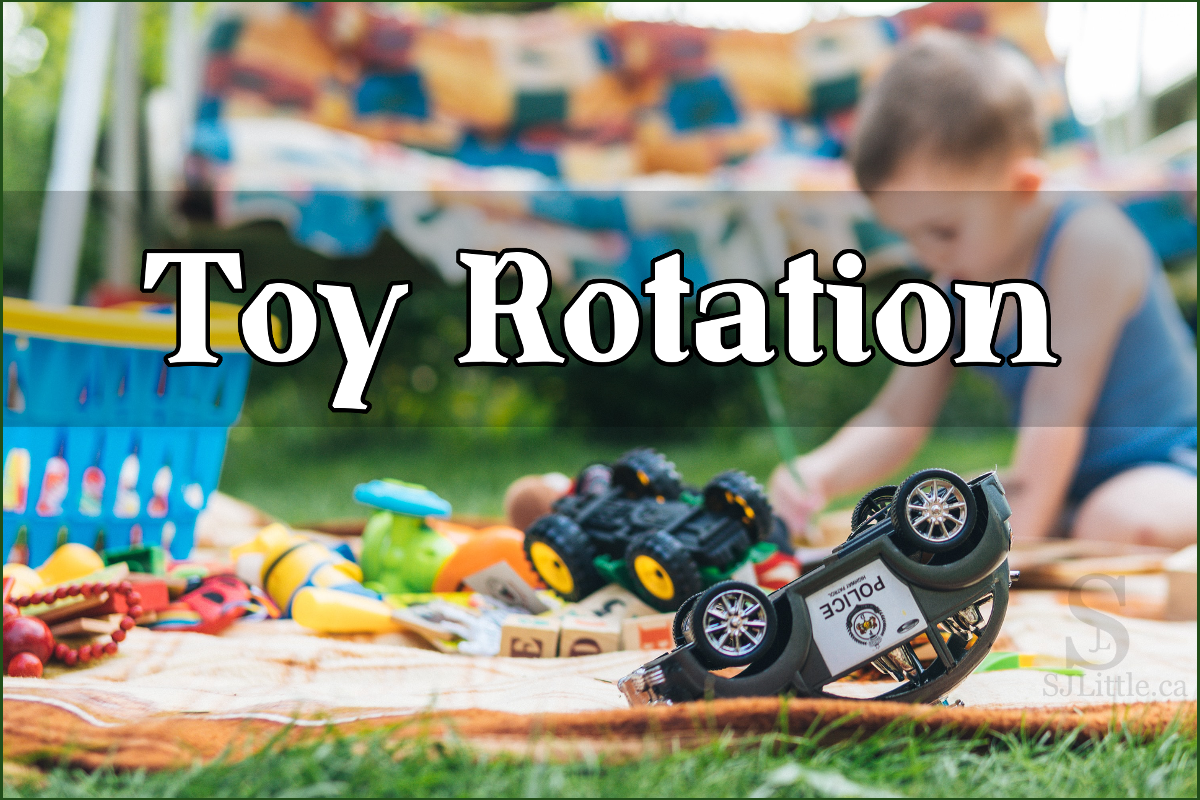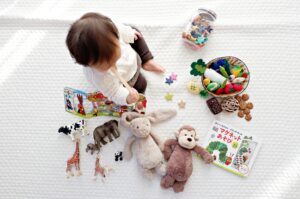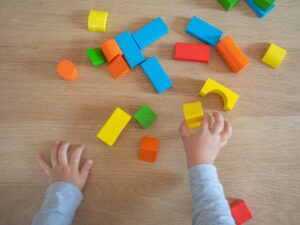
Are your kids bored of their toys? Are they disengaged and uninterested? Try rotating their toys.
Toy rotation is highly beneficial in preschools, daycares, day homes and even in everyday family life.
Benefits of toy rotation
- After a toy is packed away for a length of time, children become excited to play with it again because they haven’t seen it for so long.

- Putting away some toys for rotation may leave your child with less toys to play with. Believe it or not, this can lead to deeper engagement with the few toys that are available. With too many toys a child may bounce from one toy to another, rather than fully playing with any one toy. Sometimes less is truly more.
- Having fewer toys available also shrinks the amount of mess a child can make with their toys at any given time.
How long should toys be available?
The answer depends greatly on your child, your child’s age, and the toy itself. Because the recommended length of time is so situationally dependent, watch how engaged your child is. When they show signs of being less engaged, it’s time to rotate. Be aware, leaving toys out, until your child is bored, may significantly decrease their excitement at seeing those toys again later. Therefore, try to do the rotating on a high note so they will associate good memories with the toys for next time.
Older children, such as elementary aged children, may be able to regulate the rotating themselves. Store all their toys on a shelf. Allow them to get out and play with only one or two types of toys at a time – perhaps the cars and the blocks. When the elementary aged children realize they are getting tired of the toy, they will ask to get out a different type of toy. Have them first clean up and put away the toy they are tired of, then they may get out the next toy. In this way, they can take some responsibility for rotating their own toys.
What about at preschools and daycares, etc?
I have been a part of preschools and daycares who rotated their toys once a week, every other week, once a month, or never. Where the toys were never rotated, the children were extremely bored. They engaged in very little meaningful play and often misbehaved.
I personally would recommend rotating the toys every week or two. Some toys, such as large wooden blocks, may not need rotating as often, while other toys, such as puzzles, may only engage each child for one sitting and therefore benefit from frequent rotation.
Toy rotation in preschool and daycare settings comes with the benefit of providing a good toy washing routine. Every time new toys are set out, the old ones can be washed and left to dry before being packed away.
Does toy rotation make a difference?
My years of experience have given me reason to enthusiastically say “yes!” Have you seen the difference toy rotation makes?

